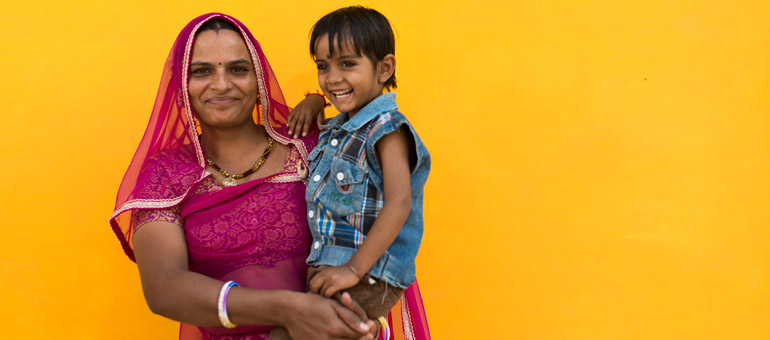New findings published in Nutrition Reviews shed light on shortfalls in young children’s diets and the role of affordability.
GAIN in partnership with UNICEF is releasing a journal supplement in Nutrition Reviews, titled "Assessing nutrient gaps and affordability of complementary foods." Additionally, 18 accompanying country briefs will be published, half of which will focus on nutrient gaps and the other half on affordability.
The study reveals that millions of young children in Eastern and Southern Africa and South Asia have extremely poor diets - including a lack of vitamins and minerals - which prevents proper growth and development and can have lasting effects. Affordability is a major barrier to access to these nutritious foods, particularly in the quantities required to meet needs for iron and zinc.
"This set of papers boils down years of complex research into a simple message: there is a handful of foods which parents could feed their children in each setting that help meet specific nutritional needs and are accessible even to the poorest families" says Saul Morris, Director of Programme Services at the Global Alliance for Improved Nutrition (GAIN).
The studies reveal that the best food sources of essential vitamins and minerals commonly lacking in the diets of young children (e.g., vitamin A, iron, and zinc) are liver, small fish, beef or goat meat, eggs, and dark green leafy vegetables. Many young children do not consume enough of these foods, in part because households cannot afford them in large enough quantities to meet all their nutrient needs. For example, even the most affordable sources of iron and zinc—often dark green leafy vegetables for iron and pulses for zinc - are frequently unaffordable.
This set of papers boils down years of complex research into a simple message: there is a handful of foods which parents could feed their children in each setting that help meet specific nutritional needs and are accessible even to the poorest families.
Millions of young children in Eastern and Southern Africa and South Asia have extremely poor diets - including a lack of vitamins and minerals. © GAIN/ Sharbendu De
"Political commitment is essential in overcoming the nutrient gaps stemming from fundamental economic and social barriers that prevent these children from accessing the sound diets to which they are entitled. We need to move faster, and to insist on accountability for providing a social protection mechanism. The human rights message resonates clearly." Says UNICEF's Christiane Rudert, Regional Nutrition Adviser, UNICEF’s Eastern and Southern Africa Regional Office (ESARO).
Policymakers will benefit from these new findings, which will enable more evidence-based policy dialogue and planning. This is especially relevant in South Asia and Eastern and Southern Africa where the current nutritional status of children is troubling.
We need to move faster, and to insist on accountability for providing a social protection mechanism. The human rights message resonates clearly.
Findings for these regions are critical for policymakers to make informed decisions that address nutrient gaps, particularly around the role of affordability, an issue that impacts many families on a daily basis.
